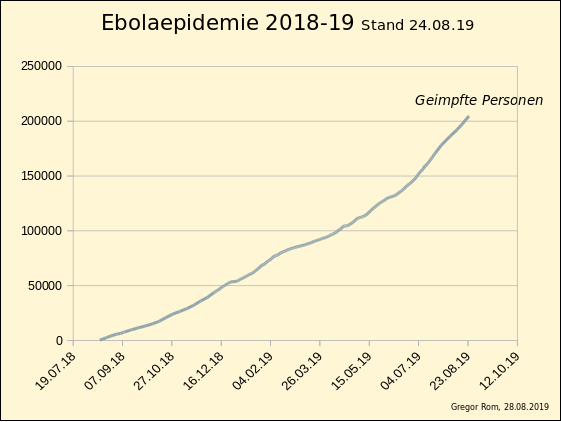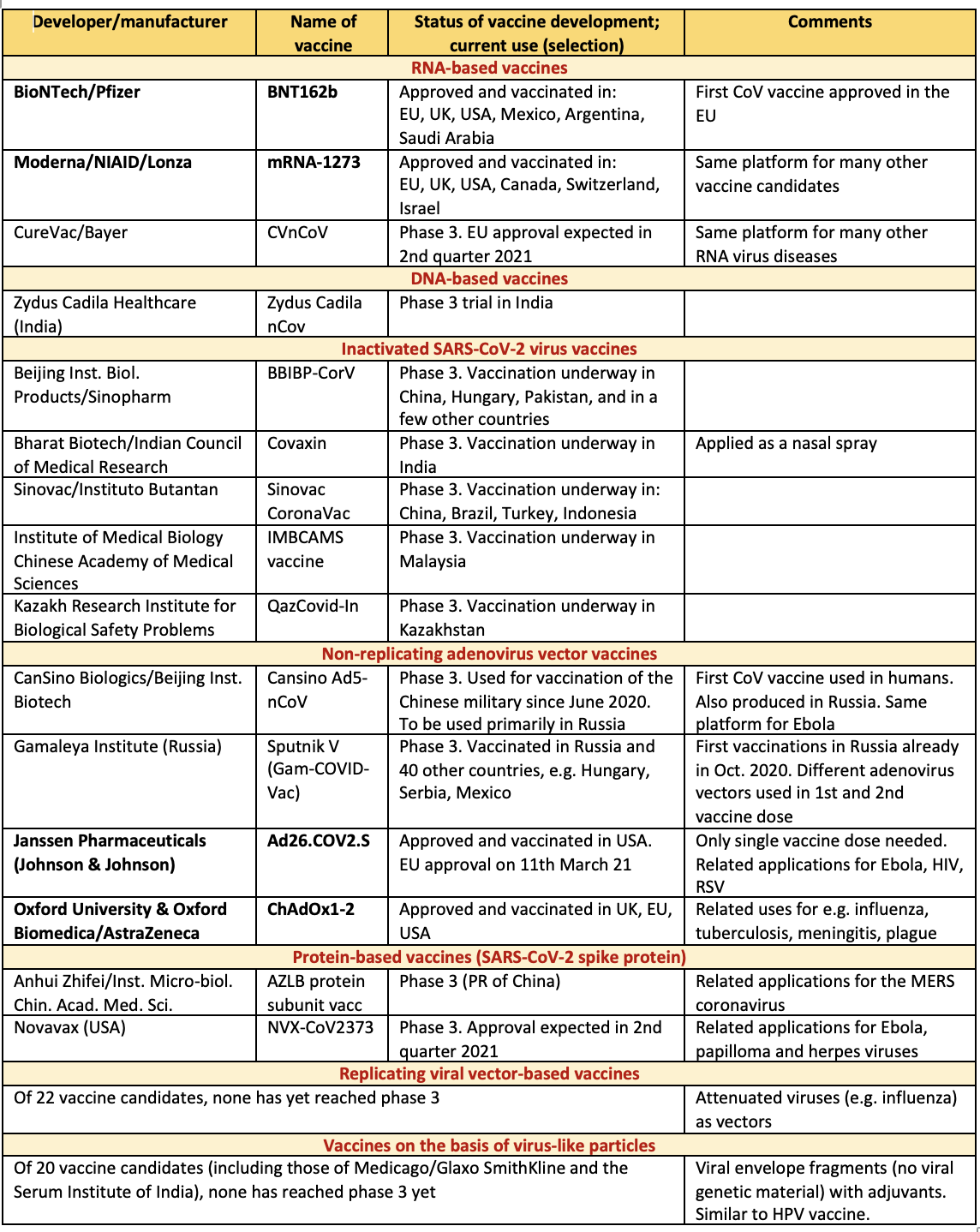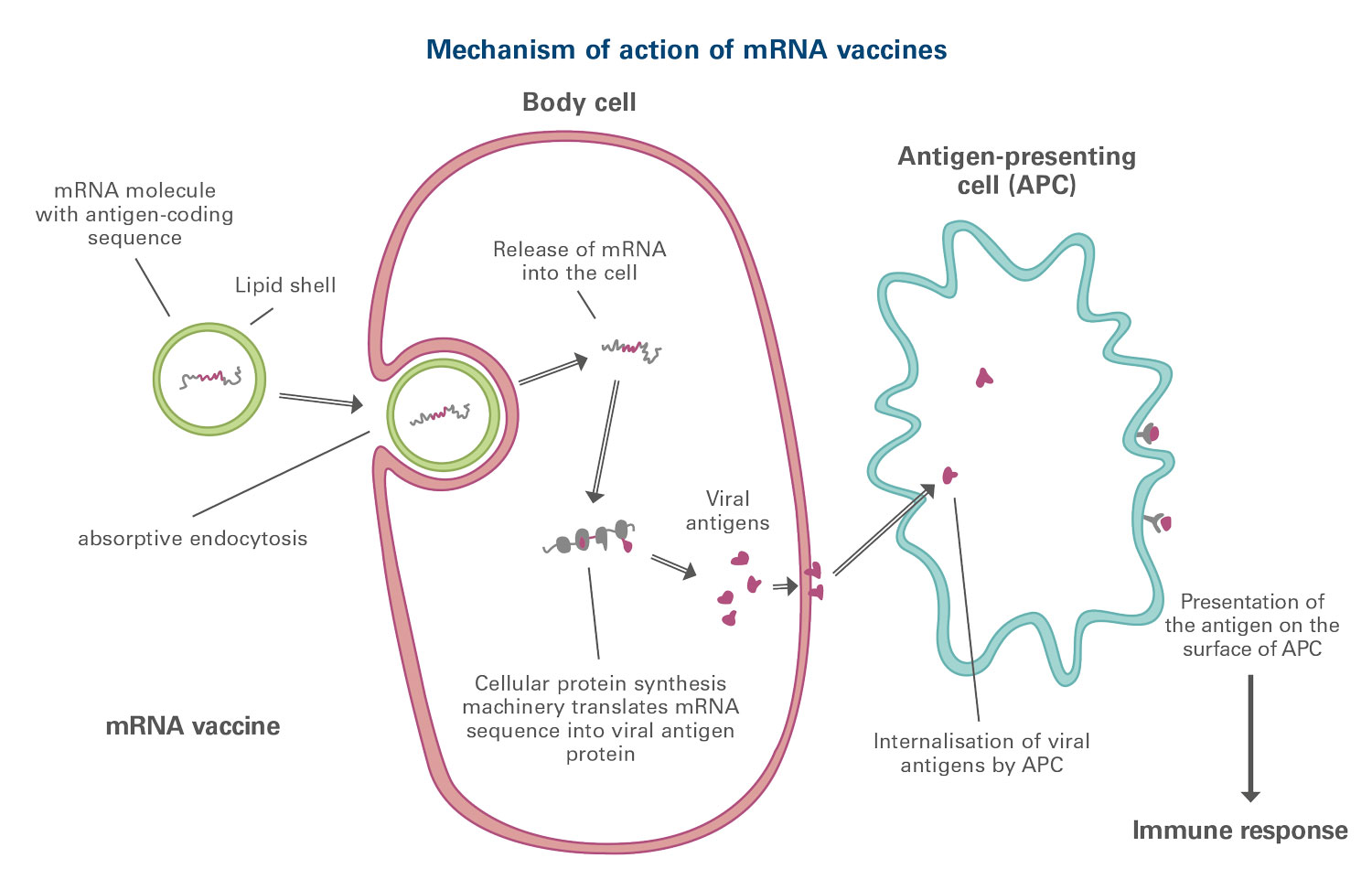"We need to make this (i.e. 2010 - 2020) the decade of vaccines," Bill Gates announced at the 2010 World Economic Forum’s Annual Meeting. At the time, industry considered vaccine development unattractive: Big Pharma dubbed it as a ‘penny market’ in contrast to the ‘dollar market’ for biopharmaceuticals or novel cancer drugs. Without funding and guarantees from public sector initiatives, academia and non-profit organisations, the research and development of urgently needed vaccines against, for example, tuberculosis, malaria, Ebola and other tropical diseases would not have progressed in recent years. CEPI (Coalition for Epidemic Preparedness Innovations), the largest and most important public-private partnership of its kind, was officially launched at the World Economic Forum’s Annual Meeting in Davos in 2017. It involved the Bill & Melinda Gates Foundation, the Wellcome Trust and the governments of Germany, Japan and Norway, and was later joined by the European Union and the United Kingdom.
The Ebola vaccine
 Vaccination with the rVSV-ZEBOV vaccine during the 2018/2019 Ebola outbreak in the north-east of the Democratic Republic of Congo. © Gregor Rom
Vaccination with the rVSV-ZEBOV vaccine during the 2018/2019 Ebola outbreak in the north-east of the Democratic Republic of Congo. © Gregor RomCEPI was founded in response to the catastrophic 2014/2015 Ebola outbreak in the West African countries of Guinea, Sierra Leone and Liberia to develop vaccines to stop future epidemics, and its slogan was ‘New vaccines for a safer world’. Isolated cases of Ebola virus infections had also occurred in New York, London, Brussels and Madrid; and the US, EU and WHO response was slow, insufficient and uncoordinated. However, Canadian scientists had successfully produced a recombinant vaccine candidate against the frequently fatal Zaire ebolavirus infection (ZEBOV). It was tested on animals and licensed to a small biotech company, which, after a phase 1 clinical trial on healthy volunteers, licensed it exclusively to the US pharmaceutical giant Merck. This vaccine consisted of genetically modified, viable vesicular stomatitis viruses (VSV). Like the Ebola virus itself, these are single-stranded RNA viruses, but not pathogenic for humans. Through recombination, the VSV envelope protein in this so-called rVSV-ZEBOV vaccine was replaced by the corresponding glycoprotein of the Ebola virus envelope, triggering a neutralising immune response against ZEBOV. With funding from the Global Alliance for Vaccines and Immunisation (Gavi, a non-profit partnership primarily dedicated to vaccinating children in developing countries against preventable life-threatening diseases), Merck developed the rVSV-ZEBOV vaccine to market approval. The high safety and efficacy of the vaccine was demonstrated in the mass vaccination of vulnerable people in the 2018/2019 Ebola outbreak in the Democratic Republic of Congo.
The knowledge related to the development of the vaccine - financed by Gavi - remains the intellectual property of the pharmaceutical company and cannot be used by anyone else wanting to work on an rVSV vaccine. Merck returned the licences for the development of corresponding recombinant vaccines against MARV (Marburg virus) and SUDV (Sudan virus) - closely related to ZEBOV and equally dangerous - to the Canadian health authorities.
2020 - A new era of vaccine development
The massive Ebola outbreak of 2014/2015 was a warning sign of what could be in store for the world in the event of a global pandemic with a new dangerous pathogen. When the first global pandemic of the 21st century, SARS-CoV-2, actually spread from China in early 2020, it soon became clear that the only plans made for countermeasures could be summed as follows: buffer the crisis and hold out until preventive vaccination is possible for all. An unprecedented international race to find vaccines against the novel coronavirus began. As recently as March 2020, the New York Times accused Big Pharma of potentially being "an obstacle to vaccine development". Now, however, almost all big pharmaceutical companies are prepared to develop vaccines against SARS-CoV-2 in alliance with innovative biotech companies, research institutes or foundations and to produce them in huge quantities. As of 21 February 2021, the Milken Institute, an independent American think tank, counted 251 projects worldwide with SARS-CoV-2 vaccine candidates using all the technologies available today. Sixty vaccines are in clinical trials and eleven are already in use in various countries (see Table, can also be downloaded from the sidebar of this page).
 Table: SARS-CoV-2 vaccines in use and important vaccine candidates; vaccines already approved in Germany are highlighted (as of 10th March 2021). © Milken Institute, Santa Monica, CA; own research
Table: SARS-CoV-2 vaccines in use and important vaccine candidates; vaccines already approved in Germany are highlighted (as of 10th March 2021). © Milken Institute, Santa Monica, CA; own researchUntil then, the speed record for a vaccine from development to approval had been four years, with a live attenuated vaccine against mumps in the 1960s. On 10th January 2020, Chinese scientists published the genome sequence of the new pathogen isolated from patients in Wuhan, and laboratories around the world immediately began vaccine development. After only eleven months of development, including clinical trials, the Mainz-based biotech company BioNTech, in collaboration with the American pharmaceutical giant Pfizer, received marketing authorisation from the European Medicines Agency (EMA) for its RNA-based vaccine on 21st December 2020.
The next vaccines to receive marketing authorisation in the EU were the product of the US company Moderna, also RNA-based, in early 2021, and shortly afterwards the vaccine developed by Oxford University together with AstraZeneca, which uses a weakened, non-replicable adenovirus as a vector to channel the genetic information for the spike protein of the SARS-CoV-2 virus into human cells. The fourth vaccine approved in the EU, developed by Janssen Pharma (part of the US group Johnson & Johnson), is based on the same principle, but - in contrast to all the vaccines mentioned so far - only has to be injected once.
The EMA has introduced a rolling review procedure to speed up the assessment of a promising investigational medicine during a public health emergency. In the case of a rolling review, an application for marketing authorisation can be made for vaccine candidates during an ongoing phase 3 clinical trial where development is still ongoing, and the results accrued in the trial are reviewed as they become available. For example, the EMA has started a rolling review of the protein-based vaccine candidate from the US company Novavax. Rather than presenting the human immune system with a complete virus, the Novavax vaccine only presents it with the spike protein of SARS-CoV-2. Also being tested through the rolling review procedure and shortly to be approved (as of mid-March 2021) is the vaccine candidate from the Tübingen-based biotech company CureVac (CVnCoV) - an RNA-based vaccine like those developed by BioNTech and Moderna.
Triumph of RNA vaccines
 Mechanism of action of RNA vaccines © Dr. Ernst Jarasch (adapted from: Elie Dolgin, “How COVID unlocked the power of RNA vaccines”, Nature, 12th Jan 2021; graphic implementation: Designwerk Kussmaul)
Mechanism of action of RNA vaccines © Dr. Ernst Jarasch (adapted from: Elie Dolgin, “How COVID unlocked the power of RNA vaccines”, Nature, 12th Jan 2021; graphic implementation: Designwerk Kussmaul)RNA vaccines, which are now at the forefront of vaccination campaigns against COVID-19, have not previously been approved for human use at all. The idea of using lipid nanoparticles to deliver RNA molecules carrying an antigen-coding sequence into cells, where the cell's own machinery translates the sequence into the antigen proteins that then trigger an immune response, is not entirely new (see Figure), but the research focus was previously on cancer therapies, not vaccine development.
The main reason for this, however, is that small companies found it difficult or impossible to obtain sufficient funding for developing RNA vaccines, as they are not considered very lucrative, explained Ingmar Hoerr, pioneer of this technology, CEO and co-founder of CureVac. Nevertheless, CureVac already began testing an RNA vaccine against rabies viruses in humans in 2013; Moderna also brought an RNA vaccine against avian flu viruses through to the clinical testing phase. In contrast to the BioNTech and Moderna COVID-19 vaccines, which have to be stored at double-digit sub-zero temperatures to keep the RNA stable over a prolonged period of time, CureVac uses RNA folded into compact 3D structures. CVnCoV can be stored for a long time in a normal refrigerator and is therefore also suitable for regions where a technically complex cold chain cannot be ensured.
It was considered necessary to be able to adapt the RNA vaccines to new modified virus strains at the same speed as appropriate sequences for an effective antigen were selected from the genome of the pathogen and customised RNA was produced. According to Prof. Dr. Klaus Cichutek, president of the Paul Ehrlich Institute (PEI), which is responsible for vaccines, simplified approval procedures could also apply to these variants. Dangerous mutations that call into question previous successes of the protective measures implemented by governments in the pandemic have already been identified on several occasions and will certainly occur again and again.
Use of technologies against the known plagues of humanity
 Where RNA-based vaccines have long been a subject of research, the coronavirus has greatly accelerated development. © CROCOTHERY/AdobeStock
Where RNA-based vaccines have long been a subject of research, the coronavirus has greatly accelerated development. © CROCOTHERY/AdobeStockThe fact that the licensed vaccines achieve a high degree of efficacy (often over 90 percent) is more than could have been hoped for. The data collected up to the beginning of March 2021 also indicate that the vaccines not only protect, but also reduce the potential for infection, even in the case of asymptomatic infections. The decades of futile efforts to develop vaccines for HIV and malaria show clearly that these successes should not be taken for granted. Most recently, a novel vaccine was expected to provide around 50 percent protection against HIV infection, but in February 2020, the $140 million trial in South Africa had to be abandoned because there was "absolutely no evidence of efficacy", according to the president of the South African Medical Research Council. The search for an effective HIV vaccine continues.
None of the vaccination programmes to combat COVID-19 would have been possible without huge financial support from governments and private organisations. Funds flooded in because this time - unlike malaria or Ebola - wealthy nations were also directly affected, and the economic, social and health dimensions of the pandemic instilled fear. The main funders of the vaccine programmes are: CEPI, Gavi, the Wellcome Trust, the Bill & Melinda Gates Foundation and the two US programmes BARDA (Biomedical Advanced Research and Development Authority) and DARPA (Defense Advanced Research Projects Agency). Many companies working on SARS-CoV-2 vaccines are looking to use their technology platforms to fight other infectious diseases, too. Janssen, for example, has vector-based vaccine candidates in the pipeline against Ebola and HIV, and Oxford University/AstraZeneca have vaccines against tuberculosis, meningococcus (MenB) and plague in their pipeline. Besides rabies and influenza, CureVac sees other areas of application for its RNA platform against other dangerous RNA viruses, such as MERS, Zika and Nipah or the Lassa, dengue and yellow fever pathogens. Effective malaria vaccines could also emerge from the new technologies. It is to be hoped that once the coronavirus pandemic is overcome, the sources of funding for these other plagues that affect humanity will not dry up on the basis that vaccines would once again be seen as little more than a ‘penny market’.